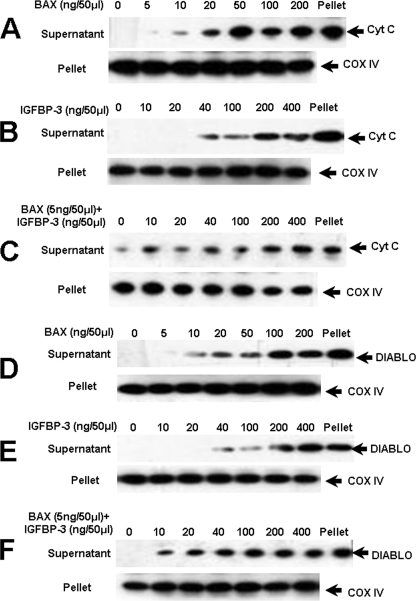FIGURE 4.
Mitochondrial release of cytochrome c and DIABLO induced by IGFBP-3 and BAX. Increasing concentrations of BAX were incubated with adult rat testis mitochondria (50 μg in 50-μl final volume) for 45 min at 30 °C, samples were centrifuged to generate pellets and supernatants that were analyzed by SDS-PAGE/immunoblotting using anti-cytochrome c (Cyt C, panel C) and anti-DIABLO (panel D). Increasing concentrations of IGFBP-3 were incubated with adult rat testis mitochondria. Samples were processed as above (anti-cytochrome c, panel B; and anti-DIABLO, panel E). An ineffective dose of BAX (5 ng/50 μl) was preincubated with increasing concentrations of IGFBP-3 peptide for 15 min at 30 °C in HM buffer before adding 50 μg of rat testis mitochondria. Samples were processed as above (panel C), using antibody against cytochrome c and against DIABLO (panel F). Compared with BAX (panels A and D) or IGFBP-3 (panels B and E) alone, the combination of BAX (5 ng/50 μl, an ineffective dose) with IGFBP-3 (panels C and F) induces release of cytochrome c and DIABLO from testis mitochondrial fractions at a lower concentration suggesting an additive action of the two proteins. Cytochrome c oxidase IV (COX IV) is utilized as a sample loading control.

